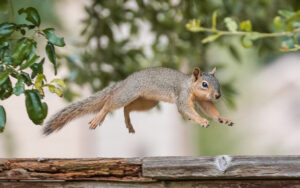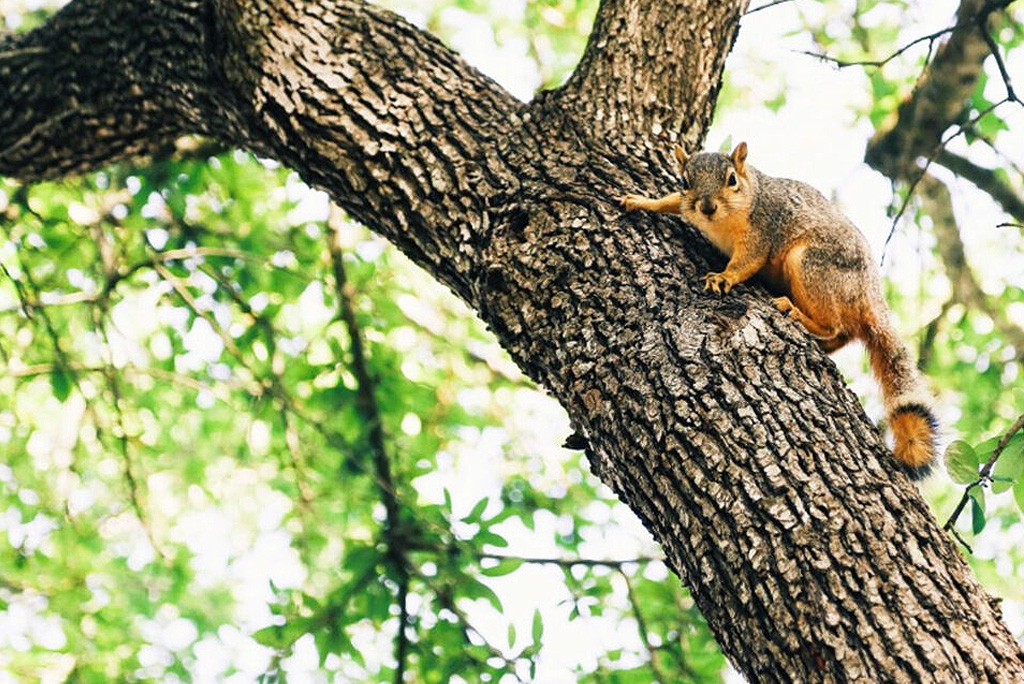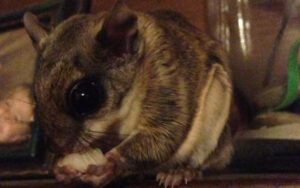If you’ve ever wondered if flying squirrels really fly, you’re not alone! Keep reading as we explain. The simple answer is that flying squirrels cannot truly fly just like birds or bats, but they can glide from one place to another.
During the flight, the body of a flying squirrel remains broadside to the direction it is traveling, and its legs are fully extended to act as airfoils. The loose skin that connects the fore and hind limbs will stretch, forming a square, wing like membrane that lifts the animal off the surface.
How Do Flying Squirrels Fly?
As we’ve briefly mentioned above, flying squirrels do not fly in the literal sense of the phrase. They can glide from one place to another by spreading a thin, furry membrane (known as the patagium) between their front and back legs. Their flattened tails help them stay stable while airborne, much like an airplane’s tail stabilizer. Though it has been widely believed that flying squirrels were capable of powered flight, the truth is that they are limited to gliding only. They can control how far they go by steering with their long flat tails. Their well-developed wings provide lift which enables them to glide. These animals also have little flaps on their patagium that curl upwards when in the air. The slant decreases drag around the wing’s end, but also works to control and stabilize the gliding motion.
In addition, since they are nocturnal, they have really big eyes that enable them to see in the dark whenever they glide or forage.
How Fast And How Far Can A Flying Squirrel Glide?
Typically, flying squirrels will glide about 150 feet without touching land but they are capable of soaring even up to 500 feet.
Flying squirrels can glide at an average speed of 30mph before making a landing and have been known to hit speeds as high as 35mph. In level flight, however, flying squirrels can reach 15 miles per hour. They can ascend 90 feet from their starting point and may glide from a height of 60 feet. They descend at angles of up to 45 degrees, using the tail for control and stability, just as an airplane uses its elevators and rudder when it is time to land. The animal will tuck in its legs and roll up into a furry ball, allowing it to hit the ground relatively softly. As they float through the air between the trees, they will make 180-degree turns in midair to avoid ground predators and to evade flying predators such as owls.
Even though flying squirrels are related to regular tree and ground squirrels, there is no doubt that these species differ from one another. Thus, we need to understand the difference between these two types of squirrels.

What’s The Difference Between Flying Squirrels And Regular Squirrels?
- Unlike regular squirrels, flying squirrels can turn head over heels in midair to orient themselves into the correct position.
- Flying squirrels have larger eyes compared to their body size than regular squirrels. Their large eyes are used for gliding and locating food in the darkness.
- Regular squirrels run up and down the trees in search of food such as nuts. On the other hand, flying squirrels rarely leave their nest without food stored in their cheek pouches and stomachs.
- A flying squirrel has a membrane of skin that stretches from the front to the back, which allows it to travel between trees. Regular squirrels do not have a membrane on their wings, although they can jump up to 100 feet.
- Regular Squirrels eat nuts, seeds, grains, and berries, whereas flying squirrels eat insects, bird eggs, and nestling birds.
- Flying squirrels are nocturnal, whereas regular squirrels are commonly diurnal, that is, active during the day. Flying squirrels sleep throughout most daylight hours and become active at night to find food.
- Regular squirrels are larger than flying squirrels and have bushy tails, which help them balance on trees, whereas flying squirrels have sleek bodies with slim tails that aid in gliding through the air.
- Flying squirrels can travel hundreds of feet during a single glide, whereas regular squirrels rarely travel more than 100 feet at a time and tend to stay close to their nest.
- The average flying squirrel weighs around 8 ounces, and the average regular squirrel weighs about 2 pounds.
- Regular squirrels live in holes in trees, unlike flying squirrels which glide between trees and build nests of leaves high up in branches.
- Regular squirrels have a shorter life expectancy of around 12 years, but flying squirrels can live as long as 20 years in captivity.
- Regular squirrels have vertical pupils, whereas flying squirrels have horizontal pupils.
These pesky creatures are among the wildlife that commonly gets into Georgia homes, causing serious damage.
So if you’re having a flying squirrel problem in the Metro Atlanta area, call us today to request a quote. Our technicians at Peachtree Pest Control are experienced experts, with the right knowledge, training, and equipment needed to eliminate your flying squirrel issue once and for all.

